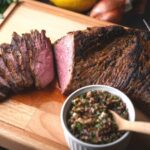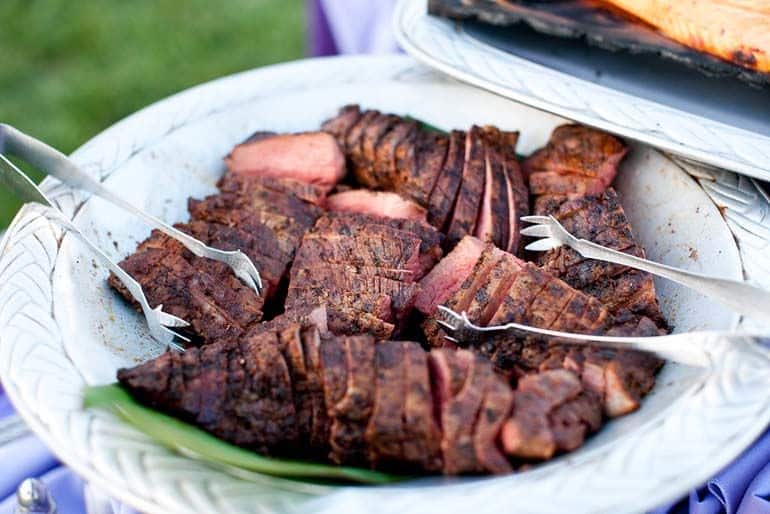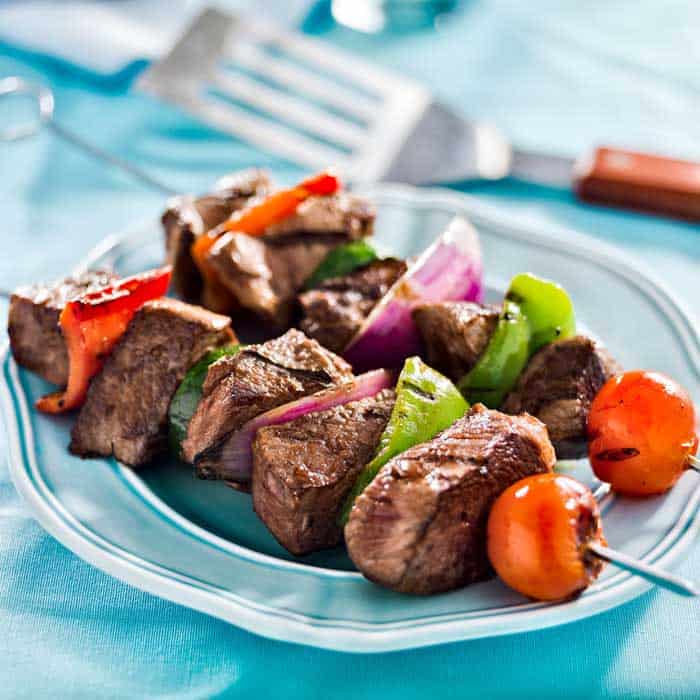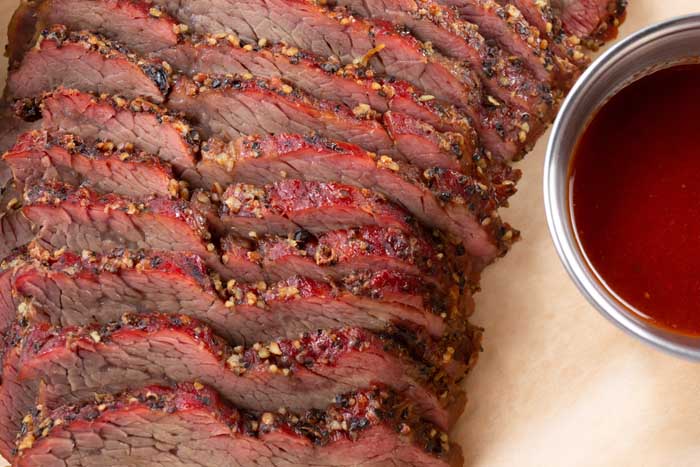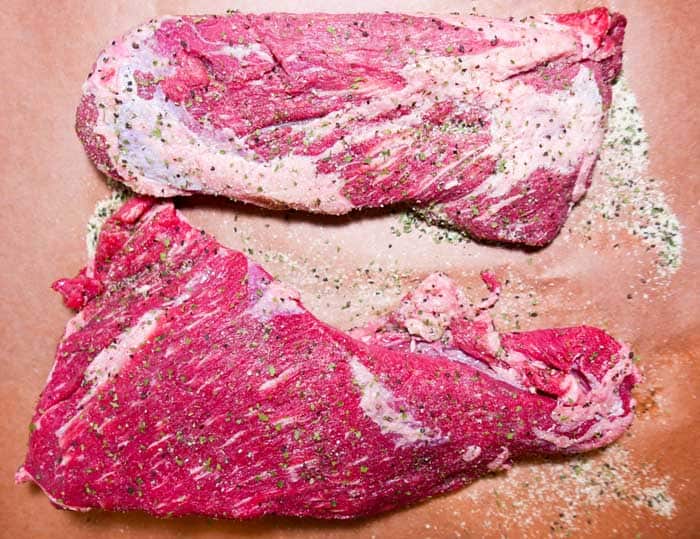This sous vide tri-tip recipe preserves all the flavor and moisture in the beef sirloin perfectly. Prepared with a quick salt and black pepper rub, and then slowly brought to temperature in a water bath, this method couldn’t be simpler. This is how to sous vide cook tri-tip the right way.
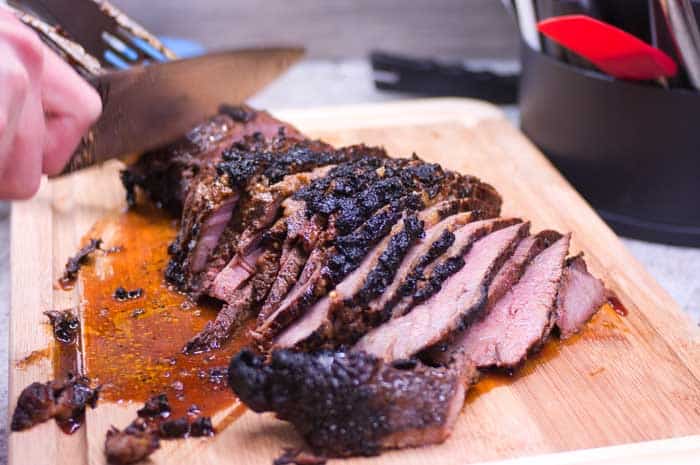
A sous vide machine might be the last thing you reach for when trying to recapture the magic of your barbecue smoker. But the truth is it’s nowhere near as difficult as you might think, and is a great alternative to BBQ smoking. Here’s how to sous vide tri-tip.
As colder weather draws in, we’re all looking for ways to cook BBQ favorites in inventive ways that keep us in the warm without sacrificing everything that makes grilled food so special.
Red meat can be a particular tough one to get right. Poor light and low temperatures can mean the grill is firmly off limits.
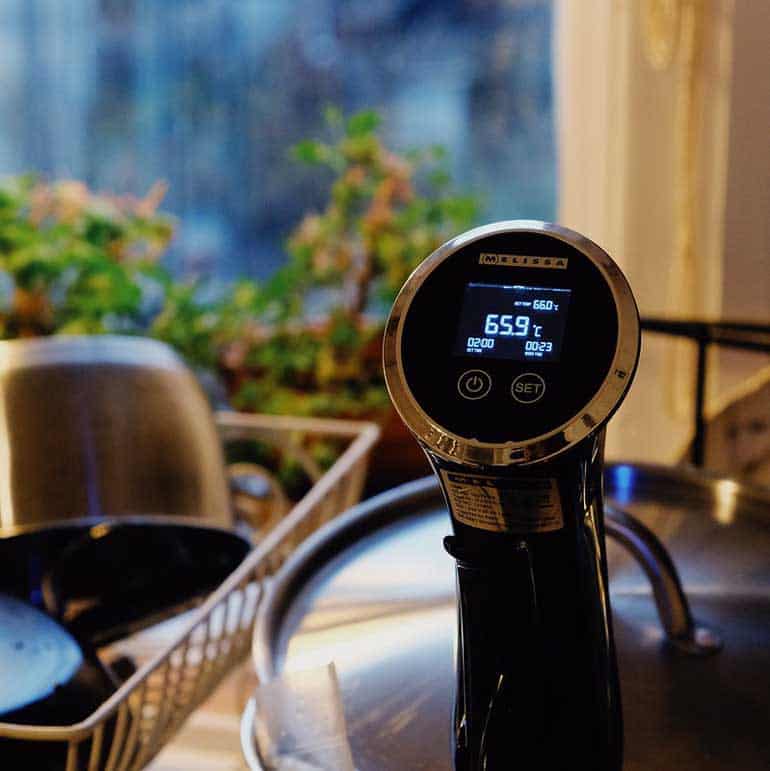
Ideally I would reverse sear tri-tip, but sometimes colder weather means we need to find a way that doesn’t leave you shut out in the cold.
The good news is that I think I might have found a solution.
The key with seared tri-tip has always been to smoke it low and slow until it approaches our ideal temperature, before then transferring it to the grill to give it that beautiful sear that makes it the beautiful meat that it is.
That in a nutshell is reverse searing. So how can we replicate that without a smoker?
Enter the sous vide machine.
I know not a lot of grill enthusiasts are familiar with, or maybe not even keen on, sous vide cooking but hear me out.
Some of the principles behind sous vide are not a million miles away from BBQ smoking.
In simple terms, the method involves vacuum sealing meat and submerging it in warm water. The temperature of the water bath is tightly controlled and slowly brings the meat to our target cooking temperature.
Sound familiar?
OK sure, the vacuum sealing is new, but the close control of heat levels and bringing our meat to a precise temperature are the two of the same main principles that make barbecue smoking so special.
A noticeable difference here is that the food is vacuum-sealed, which obviously doesn’t help us impart smoke flavors or aromas on it. However, what sous vide does allow is for the juices in the meat to bathe the meat. Vacuum sealing keeps it all locked in, so the meat will cook slowly in its juices as it’s brought to temperature.
That means delicious, juicy, slow-cooked beef. Hopefully you’re paying attention now.
I was skeptical at first, but now having tried it I can say that it’s a delicious way to enjoy tri-tip. Yes it isn’t as smokey, but it is far, far juicier. It also does away with any of the brining or much of the preparation that we would otherwise have to do prior to smoking it.
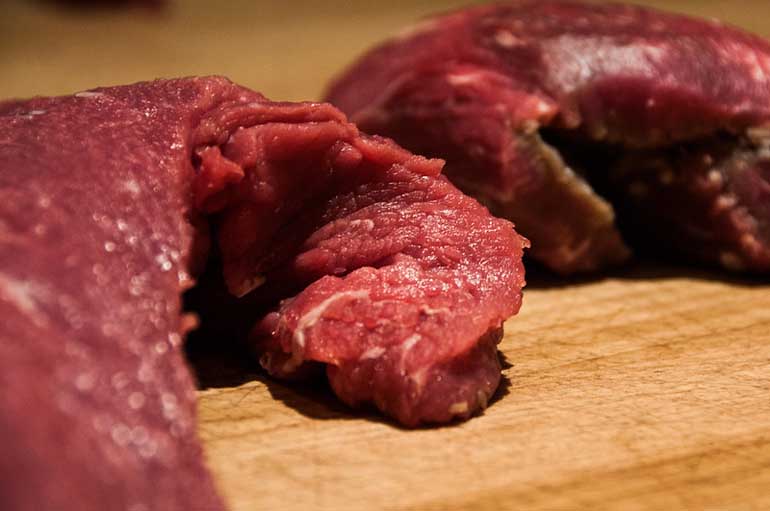
So here’s a quick recap.
What is sous vide cooking?
Sous vide is a cooking method that involves submerging vacuum sealed food in water. The sous vide machine controls the temperature of the water bath precisely to a specific temperature and has a circulation unit that helps ensure that this temperature is maintained.
Where regular oven cooking or grilling can lead to cold spots or uneven cooking through your meat, submerging it in controlled water ensures a far more cook.
While oven cooking or grilling also allows juices and fats to fall away, degrading the temperature of the food, sous vide locks it all in. Not one ounce of flavor is lost.
It’s also very hands-off, with much of the work being done by the machine once you have set the temperature.
So what you’re left with is juicy, tender, delicious meat.
It’s given us beautiful results with our sous vide beef ribs, and now it’s the turn of tri-tip.
What is tri-tip?
Tri-tip is a cut of beef that comes from the bottom sirloin. It’s distinct-looking piece of meat that’s almost triangular in shape. Tri-tip steak is at its best when about two to three pounds in weight, and I always recommend choosing a cut that is grass-fed beef. Also always go for either ‘choice’ or ‘prime’ cuts.
How to prepare tri-tip for sous vide
Because it doesn’t need brining, the preparation process for sous vide tri-tip is really easy. It will simply boil down to trimming it and seasoning it.
If you like a good bit of fat on your beef, you may decide that you don’t want to trim the meat. However, if you would prefer it to be leaner then I recommend removing some of the fat cap. The fat is what can give the meat flavor however, so don’t trim it all off.
Also, if the fat cap is at least 1/4 inch thick I recommend trimming it down slightly. If the cap is too thick it will not render properly when cooked, which could leave you with a layer of rubbery mess.
To trim it, simply cut off any excess fat and silver skin (the thin membrane sometimes found on meat).
When it comes to seasoning, a strong cut of beef like this won’t need much added to it. So I recommend applying a blend of kosher salt, black pepper and garlic powder. Apply it generously, and try to work it in with your hands.
Best sous vide tri-tip time and temperature settings
Seeing as it’s essentially a form of steak, ‘doneness’ will largely be down to you. However we do also want to be sure that the beef is cooked enough to make it tender and juicy enough.
I recommend cooking it at 135°F to achieve a medium-like cook, and closer to 130°F if you like it a bit rarer.
You will then need to cook it for 5-6 hours. This might seem a bit long, but tri-tip is a large cut of meat so requires a bit more cooking time.
6 hours should be enough time for the connetive tissue and collagen in the meat to break down, resulting in a beautifully tender cut of beef. Doing this at 130°F will help to strike the balance between done and that lovely red-rose color we all love in our meat.
For the best results, make sure that you have a good quality sous vide that accurately measures and regulates the water bath temperature.
If you need a reliable machine, I recommend either the Breville Joule (the one I have), or this one from Anova Culinary.
How to carve tri-tip
Just like cutting brisket, slicing tri-tip can be a tricky mess. This is because the direction of the grain can vary wildly across the surface of meat, making slicing it against the grain all the more difficult.
Try to break down the meat into smaller pieces (not tiny, but enough to make things easier). This should help choosing slicing direction much easier for each section of beef.
Once you have removed the tri-tip from the sous vide and vacuum packaging, cut it into the two main parts. With a sharp knife, carve it against the grain.
Tri-tip rub
I like to keep things very simple when it comes to sous vide tri-tip. So for this recipe I’ve used a simple rub comprised of just kosher salt, black pepper, and garlic powder. For me, is just enough to help bring out the juices and natural flavors in the meat without overpowering them.
If you would like to try something with a bit more of a flavor kick to it, try a good beef rub.
Ready to get going? Let’s get into it!

Sous Vide Tri-Tip
Equipment
Ingredients
- Tri-tip about 2-3 pounds in weight
- Kosher salt
- ground black pepper
- Garlic powder
Instructions
- Set your sous vide machine to 135°F
- Use a vacuum sealer to seal the meat
- Submerge the packed meat in the sous vide. Allow to cook for 6 hours.
- Just before the tri-tip is done, start up your gas or charcoal grill to a high heat.
- Remove the tri-tip from the vacuum sealing and add further seasoning. Transfer to the grill directly over heat. Sear on each side for 1-2 minutes.
- Cook until well seared and transfer to cooking board. Cut against the grain for best results and serve.





